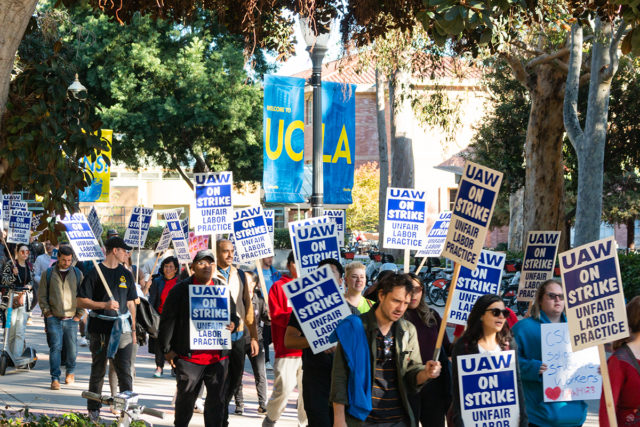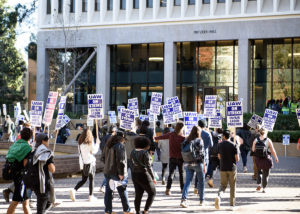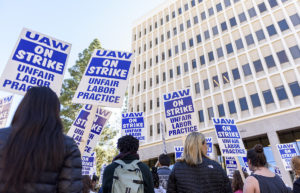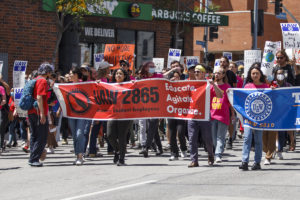A ripple effect of university labor actions has followed the UC academic worker strikes, exposing long-standing issues with employment conditions in higher education.
Graduate students at Temple University, a public university in Philadelphia, started a six-week long strike in January, calling for higher wages, health care benefits and better working conditions. Their strike ended March 13, with an agreement from university administration promising increased pay, health insurance, paid leave and workload review, according to a press release from Temple University.
In addition to Temple University, graduate students at other universities across the nation have gone on strike. Graduate students at the University of Michigan went on strike March 29, demanding higher pay, expanded health care coverage and greater access to child care.
The two strikes follow the academic worker strike across the UC, which began on Nov. 14 and was the largest academic worker strike since 2019, including union members from United Auto Workers Local 2865 and 5810 and Student Researchers United-UAW. Academic workers and researchers went on strike for six weeks to demand increased support and better working conditions, ultimately reaching an agreement on Dec. 23. Under the new terms, academic workers will receive child care reimbursements, eight weeks of paid leave for serious health conditions and reduced public transportation fees.
[Related: UAW ratifies contracts for graduate student workers, ends historic UC-wide strike]
“I think our strike kind of inspired a bunch of others to kind of finally stand up and really fight their employer,” said Todd Emmenegger, a UAW Local 2865 union organizer and fifth-year atmospheric and oceanic sciences doctoral candidate.
The recent wave of strikes in higher education is a result of increasing strike activity in public education across the country, a response to decades of budget cutting and austerity politics in which public education has been systematically underfunded and disinvested, said Toby Higbie, an associate director of the UCLA Institute for Research on Labor and Employment.
Graduate students are starting to view themselves not just as students but as workers and realizing that they’re being undercompensated to a large extent, Emmenegger said. He added that graduate students across the country bring in a large sum of money for the university through research grants and are paid a small amount in return for their contributions.
Graduate student workers at UCLA are now being paid up to 7.5% more every month since the ratification of their new contracts.
“It’s life-changing money when you’re making $24,000 a year,” Emmenegger said.
At the University of Michigan, the gap between the cost of living and graduate student salaries has tripled since 2020, according to the Graduate Employees’ Organization. The average graduate student worker at Temple University made $19,500 a year prior to the new agreement, which is barely half the cost of living in Philadelphia, according to the Temple University Graduate Students’ Association.
Higbie said the strike raised awareness about the cost-of-living crisis as well as some people’s inability to live near where they work because of housing costs. Many graduate students are used to paying large percentages of their salary to rent or aren’t able to find a sufficiently close place to live, said Loretta Gaffney, a lecturer of labor studies.
“For 20 years, there have been … report after report from inside the university saying that pay should be increased and that there’s problems with housing and houselessness and food insecurity,” Higbie said.
The strike exposed this unpleasant reality of the University exploiting workers and keeping their salaries low, he added.
There needs to be more funding coming from the state to fund higher education, Higbie added. The workforce of academia should be a bigger priority, Gaffney said, adding that greater state resources and fundraising priorities would help maintain the quality of the university.
The strike showed that there are teachers and researchers willing to make their needs known, Gaffney added. The UC strike captured attention across the country and is changing people’s imagination of what universities could look like, Gaffney said. Some unions feel stronger and inspired by the effectiveness of the UC strike, she added.
“We’re in a labor wave right now. And we have another wave that’s coming up after us because we’ve inspired so many people,” said Emmenegger, “I hope to see a movement where we take education back.”






Comments are closed.